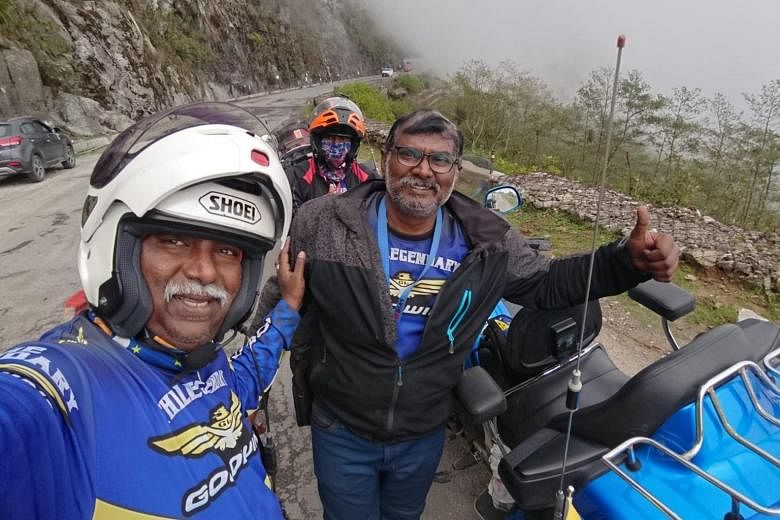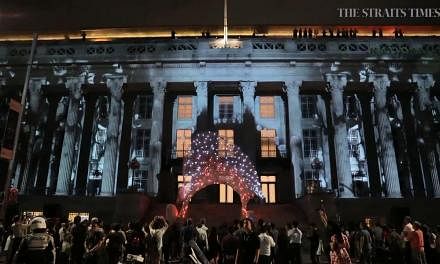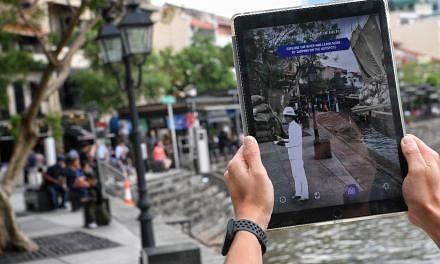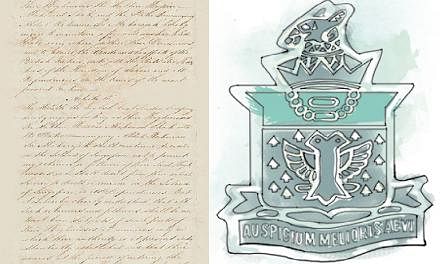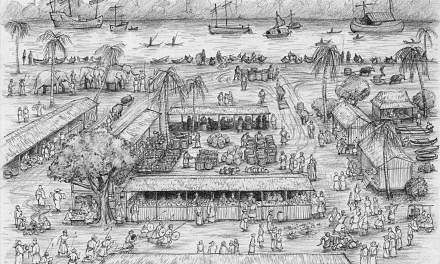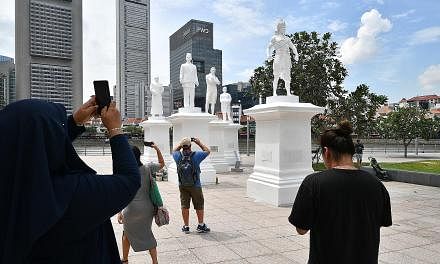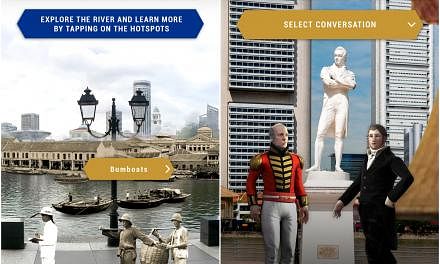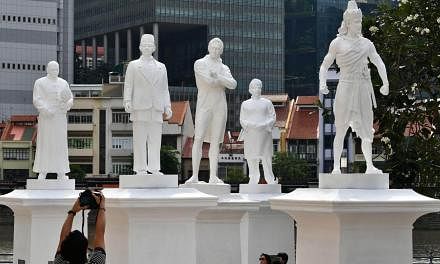When Mr S. Balachandran and his two friends, who call themselves the 2019 Centennial Riders, decided to ride their motorbikes from Singapore to India, they were told that it was impossible.
"There was a lot of criticism and opposition to our idea. Some laughed at us and called us crazy. They said our bikes would break down and come back in pieces," said the businessman.
The Singaporean trio, however, wanted to prove their critics wrong and so went ahead with the trip to commemorate Singapore's bicentennial year. They also wanted to push the limits of their Honda Gold Wing motorbikes.
"We took it up as sort of a 'resilience challenge'," said Mr Balachandran.
"Singapore suffered through many challenges to get to where it is today. So we thought of accomplishing something similar. I believe the Gold Wing hasn't been ridden in such a way, and we wanted to prove that it can be."
Mr Balachandran, 56, and his friends, Mr P. Pannirselvam, 54, and Mr A. Arunagiri, 53, both of whom are Singapore Armed Forces regulars, started their road trip on March 26 and covered 13,458km, riding up to 400km a day, in 43 days.
From Singapore, their journey took them to Malaysia, Thailand, Myanmar, Bhutan, Bangladesh, Nepal, China and India.
They usually rode from 5.30am to 5pm and rested at night.
Each rode a Honda Gold Wing, a popular touring motorcycle which weighed about 500kg, and spent more than $10,000 on the trip.
"These bikes are luxury bikes which are meant for well-paved roads and not tough terrains. This proved to be a challenge, especially when we went to the mountainous regions of Nepal and Tibet," said Mr Balachandran.
OVERCOMING THE ODDS
The trio feared that they would be hit by wet weather during the trip. Instead, they faced extreme weather conditions.
India is particularly hot during the summer (March to May), when temperatures in the north can be 40 deg C or more.
Said Mr Balachandran: "The biggest challenge for us was the extreme weather conditions. Certain parts of India, especially the north, were so hot that it went over 50 deg C. Lucknow got as high as 51 deg C. But at the Everest it got as cold as minus 3 deg C.
"When it was hot, we were so tired and thirsty that we had no appetite to eat. We just drank water and took many breaks. We also allowed the bikes to cool. The tyres could have burned if they were in contact with the ground for too long.
"In some places, there were no air-conditioners. We had only fans, which blew hot air at us while we slept at night. Imagine how uncomfortable it was."
The highlight of their journey was the ride to the base camp of Mount Everest in Nepal, which sits at an altitude of 5,157m.
They started from Kathmandu, Nepal's capital, on April 14 and it took them four days to cover the 714km to the Everest base camp. The route took them through Kerung, a village on the Nepal-China border, and Tingri, a picturesque town in southern Tibet.
The bikers were not prepared for the cold and the low oxygen levels, but they had thick clothing.
"Travelling in the Everest area was difficult," said Mr Pannirselvam, an army warrant officer.
"There was very little oxygen and we struggled to breathe. It was so cold that ice started forming on our bikes. But somehow we managed to persevere and reach the Everest base camp. We are very proud as we believe that we are the first group of riders to take the Honda Gold Wing bike to such heights."
From the Everest base camp, the bikers returned to Kathmandu and then headed for Varanasi, the holy city for Hindus in India, via Sonauli and Gorakhpur - a two-day, 482km trip.
Other than dealing with the climate, the trio also had to contend with less-than-ideal roads.
"In Kathmandu, there were places without roads, just sandy paths which served as makeshift roads. Heavy pebbles and potholes were common. I fell from my bike many times," said Mr Pannirselvam.
"Once, the gear-shifting mechanism in my bike broke and we were stuck in the middle of nowhere. Thankfully, we hailed a lorry and the driver was kind enough to load the bike and take it to a mechanic.
The riders also had to cross 57 flimsy bridges in Myanmar.
"They were mostly wooden and had not been maintained for many years. We had to push our bikes across most of them," said Mr Pannirselvam.
In India, the trio were greeted like celebrities. Big groups gathered to gawk at their luxurious bikes, which are rarely seen on Indian roads. People in cars and motorcycles who rode past them often slowed down to take photos.
Crowds also gathered wherever they stopped.
"At times, we couldn't even see our bikes because people would cover them," said Mr Balachandran. "We had to push our way through to reach them.
"One guy even tried to climb onto a bike for a photo despite repeated warnings from us. He fell but luckily didn't injure himself."
Dodging animals such as cows and dogs on narrow Indian roads was another issue for the riders. Since their motorbikes were big, it was difficult to manoeuvre past the animals.
To ensure safety, they had to maintain speeds of 50kmh to 60kmh, which made their entire trip longer.
In Mangaluru, a city in Karnataka, hordes gathered when they parked their motorbikes at the Patillion.
This attracted the attention of a reporter from Kannada daily Hosa Digantha, whose offices are located right next to the hotel.
Their story made the headlines in the newspaper on May 2.
Their arrival in Thanjavur, Tamil Nadu, on May 5 also attracted wide media coverage. They were featured prominently in the Vikatan and Deccan Chronicle.
At most of the hotels where they stayed in India, the three men put up stickers celebrating Singapore's bicentennial.
PLANNING BEGAN A YEAR AGO
The bikers began planning their trip in June last year. They first charted the route, engaged agents and identified accommodation.
They then booked their lodgings all the way to Tibet, while keeping their options open in India.
Mr Balachandran acknowledged that there were many questions and doubts in the beginning.
"When I got the idea for the trip, I approached Pannirselvam," said Mr Balachandran.
"He asked me many tough questions, such as: 'What would we do in case of a breakdown? What do we do if there are no roads? If someone fell sick or got into an accident, would we still carry on?'
"I did thorough research to convince my two friends that it was possible to do the trip and that it would be a great achievement if we were to complete it. Every problem has a solution, and I was determined to find the solution and attempt this venture."
The trio wanted to travel to Sri Lanka too but this fell through because of travel restrictions to the country following the Easter Sunday bombings this year.
They returned to Singapore from Chennai on May 8. Their bikes were shipped back on June 15.
• This article first appeared in tabla! and subsequently in Tamil Murasu
